It's Monday morning and you're ready to kickstart the week with fresh insights and strategies.
But then, you open up your email to find a report filled with your latest employee wellness survey results, and it paints a rather unexpected picture: Your employees are feeling overworked, stressed, and unappreciated.
This comes as a surprise. Your organization promotes a healthy work-life balance and a supportive culture. Your team leaders seem approachable, and you, yourself, make a conscious effort to address concerns promptly.
However, you remember whispers of employees battling burnout, struggling with remote work isolation, and navigating the pressures of high expectations.
What if these unaddressed wellness concerns are silently chipping away at your team's productivity and morale?
Consider this: Research has shown that when employees enjoy optimal physical, mental, and emotional health, they are more engaged, motivated, and productive. A healthier workplace, in essence, fosters a more robust bottom line.
That's why it is essential to delve into the world of Employee Wellness Surveys and understand their true potential.
The right questions could uncover truths buried deep beneath the surface, paving the way for a more holistic, happier, and healthier workplace. Your employees' wellness is directly tied to your organization's success. So let's discover how you can effectively tap into this underutilized resource.
Employee wellness isn't something that you build and then stop working on.
You have to be in constant communication with your employees to make sure their expectations are met and they're currently happy at your organization.
This is especially true during times of change.
Here's how we can help you improve employee wellness:
Our platform automatically collects employee feedback on job satisfaction at regular intervals (70% of our clients opt for monthly surveys).
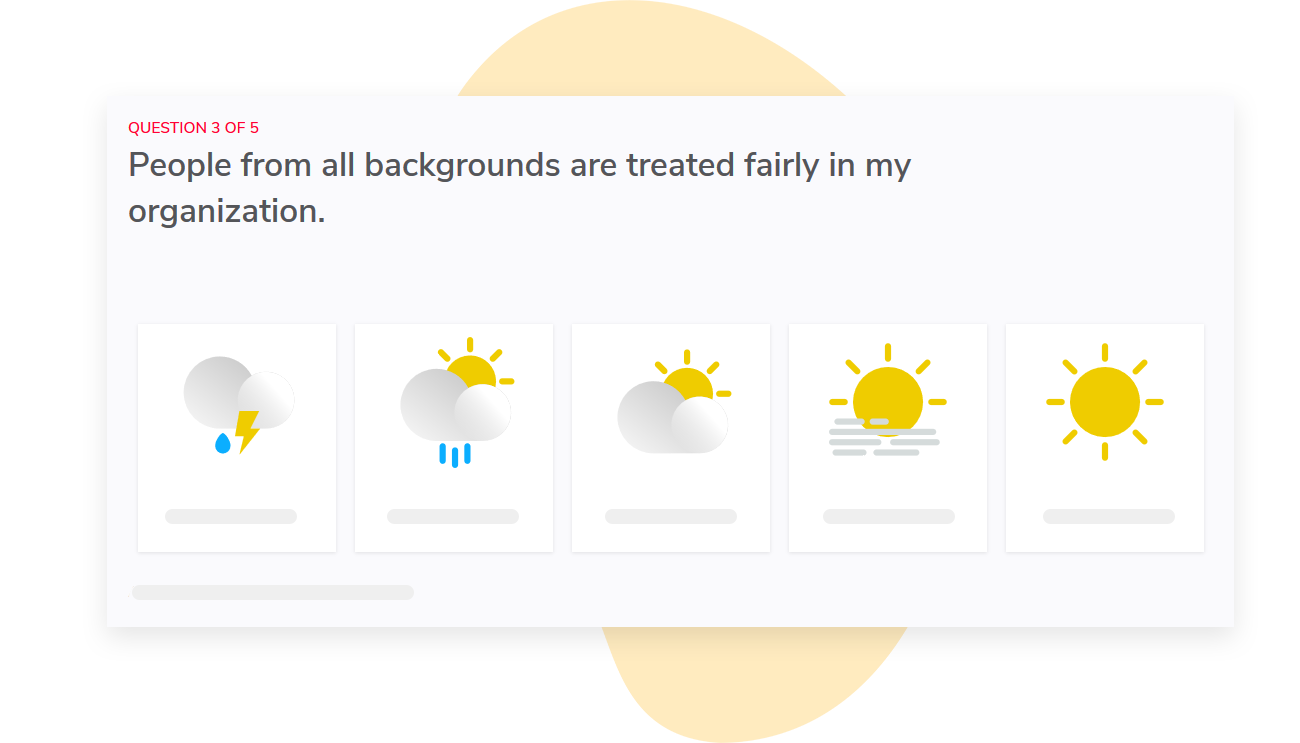
Sparkbay then presents the results in intuitive reports with a clear score out of 10.
With the help of these reports, you’re able to track employee satisfaction in real-time, and understand your top improvement opportunities.
You can also segment your data based on manager, department, tenure and more, or benchmark yourself against companies in the same industry as yours using our proprietary dataset.
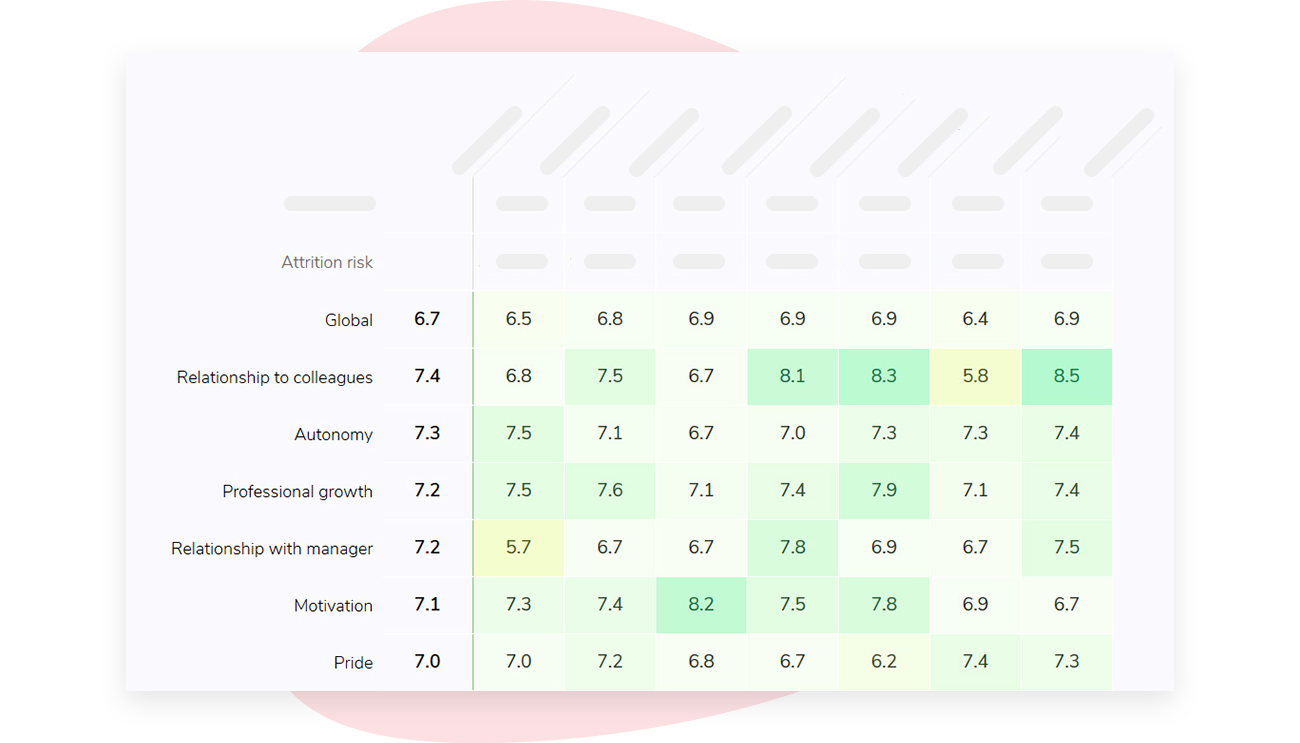
We also created a library of easy-to-implement actions from the most successful organizations to help you and your team managers learn and improve.
It’s a great way to build a culture of constant improvement, and give employees a voice that gets heard and acted on.
If you're interested in learning how Sparkbay can help you increase employee satisfaction, you can click here for a demo.
Here are the crucial questions every company should ask in their employee wellness survey.
- Our organization takes adequate actions to promote employee wellness.
- I work in a physically and psychologically healthy environment.
- The mental health resources available meet my needs.
- I can have open discussions about anxiety and stress at work.
- I don't feel judged if I take time off.
- I feel supported when I am dealing with personal or family issues.
- I find my workload reasonable.
- I can communicate openly with my manager about workloads and performance expectations.
- My work schedule is flexible enough to deal with family or personal life.
General health and stress management
Corporate culture
Workload and Work-life balance
Understanding the significance of employee wellness survey questions
General health and stress management
Our organization takes adequate actions to promote employee wellness.
This question speaks directly to your company's proactive stance on promoting employee well-being. As an HR professional, it's important to ensure that your organization isn't merely reactive when it comes to employee health issues.
Is there a systematic plan in place to encourage regular exercise, healthy eating, stress management, and work-life balance? This question forces a reality check, prompting employees to evaluate if your company's wellness initiatives are sufficient, relevant, and engaging. Their response can guide you towards areas that need improvement, ensuring that your organization is actively contributing to their physical and mental wellness.
I work in a physically and psychologically healthy environment.
The work environment plays a critical role in employee well-being. A physically healthy environment means clean, comfortable, and ergonomically designed workplaces. A psychologically healthy environment, on the other hand, is one where employees feel safe, respected, and valued.
Asking this question underlines the importance of both aspects. It gives you insights into how employees perceive their work setting, enabling you to identify areas of concern, be it air quality issues, ergonomic problems, or instances of bullying and harassment. These insights can guide you in making necessary changes to foster a healthier and more conducive work environment.
The mental health resources available meet my needs.
Work-related stress and mental health concerns are on the rise. This question allows you to assess if your organization provides sufficient mental health resources and if employees are finding them useful.
Are your employees aware of available resources? Do they feel they are adequate? Their responses can reveal gaps in communication or resource provision, helping you enhance your mental health support initiatives and ensure they align with employees' actual needs.
Corporate culture
I can have open discussions about anxiety and stress at work.
Creating an open culture where employees feel comfortable discussing their stress and anxiety is crucial in promoting mental wellness. This question gauges whether your workplace culture encourages such open dialogues.
If employees hesitate to express their feelings due to fear of judgment or retribution, it's an indicator that your culture may be stifling and unhealthy. Based on their feedback, you can work on nurturing a culture that values openness, empathy, and psychological safety, fostering better mental wellness among employees.
I don't feel judged if I take time off.
This question probes the culture of your organization around taking time off. Time off, be it for illness, vacation, or personal reasons, is essential for employees' well-being.
If they fear judgment or adverse consequences when taking time off, it's a sign that your organization may be unintentionally promoting burnout and overwork. Understanding employees' perceptions can help you foster a culture that respects and encourages necessary time off, contributing to their overall wellness.
I feel supported when I am dealing with personal or family issues.
Personal and family issues can significantly impact an employee's mental well-being and performance at work. This question assesses whether your organization provides the necessary support during such challenging times.
The support can be in the form of flexible work hours, leaves, or emotional support from team members and managers. If employees feel unsupported, it's crucial to understand why and implement strategies to better support them during difficult times.
Workload and Work-life balance
I find my workload reasonable.
This question provides insights into whether employees are feeling overworked. A workload that's too heavy can lead to stress, burnout, decreased productivity, and a decline in work quality.
By asking employees if they find their workload reasonable, you can identify instances of overwork and take corrective action. You may need to redistribute tasks, hire additional staff, or provide better project management training to ensure a balanced workload.
I can communicate openly with my manager about workloads and performance expectations.
Open communication with managers about workload and performance expectations is crucial for maintaining balance and preventing burnout. This question assesses whether your organization encourages such transparency.
If employees feel they can't express their concerns about their workload, it can lead to dissatisfaction and decreased productivity. Their responses can guide you in promoting open and honest communication, ensuring managers and employees are on the same page regarding workload expectations.
My work schedule is flexible enough to deal with family or personal life.
This question gauges your organization's work-life balance. Work-life balance is critical for employee wellness, preventing burnout, and promoting job satisfaction.
If employees find their work schedule inflexible, it could lead to increased stress and decreased productivity. Their feedback can help you make necessary adjustments, like offering remote work options, flexible hours, or better leave policies, thereby improving work-life balance.
Employee wellness is not a one-off initiative
The role of employee wellness surveys in any organization cannot be overstated. They offer invaluable insights into your employees' well-being and the effectiveness of your organization's wellness initiatives. As an HR professional, these surveys are among your best tools for identifying issues related to workload, corporate culture, stress management, and more.
Each question posed in these surveys serves a unique purpose, helping you gauge different aspects of your workplace environment. By understanding the significance of each question, you can better interpret the responses and take appropriate action. Whether it's improving mental health resources, promoting open discussions, or ensuring a healthy work-life balance, your actions can contribute significantly to building a healthy, productive, and content workforce.
Remember, employee wellness is not a one-off initiative but a continuous process of learning, understanding, and improving. So, use these surveys wisely, listen to your employees, and make their well-being a priority. After all, a healthy employee is the most significant asset to your organization.
The benefits of a robust employee survey platform
A robust employee survey platform such as Sparkbay can help leaders understand obstacles and opportunities and focus their efforts where it matters. It can also track engagement and satisfaction over time to identify which actions are working and which aren't.
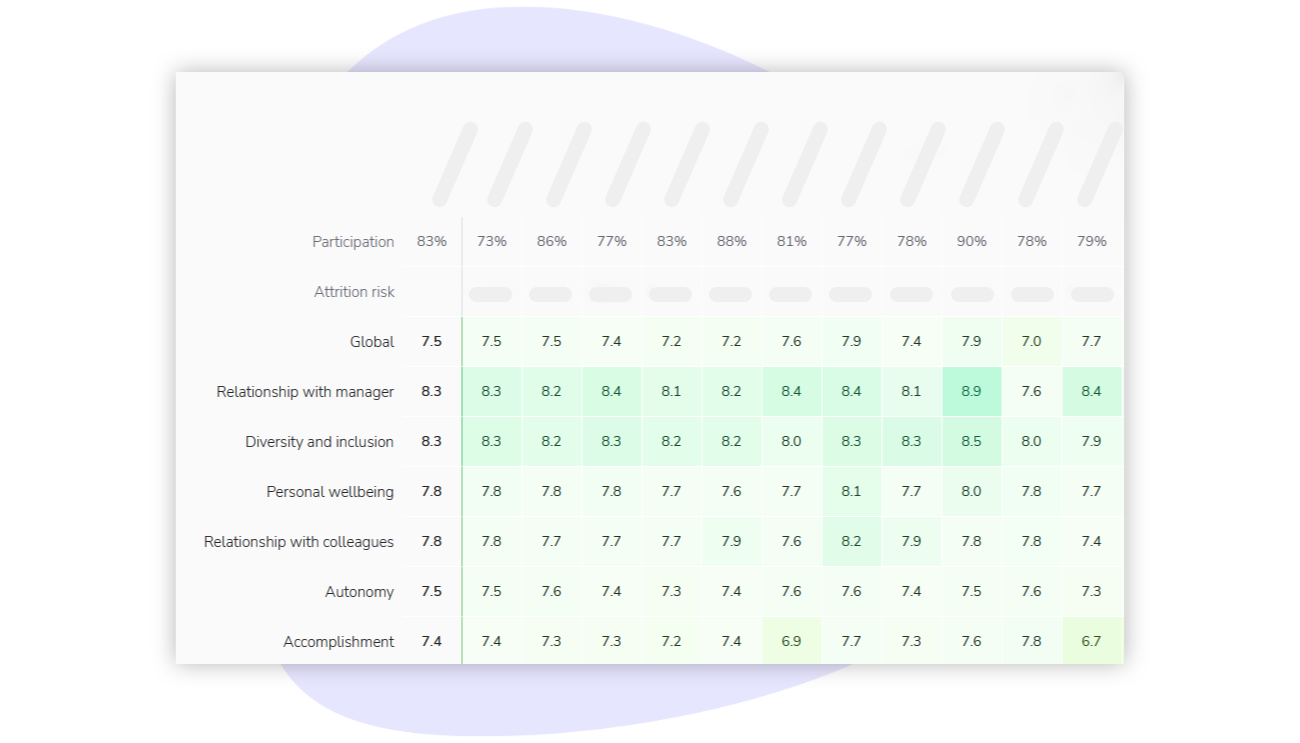
Explore employee data any way you want
It is important to be able to segment data based on demographics such as tenure and role. Sparkbay allows leaders to interrogate their data in any way they want to uncover deeper insights about their people.
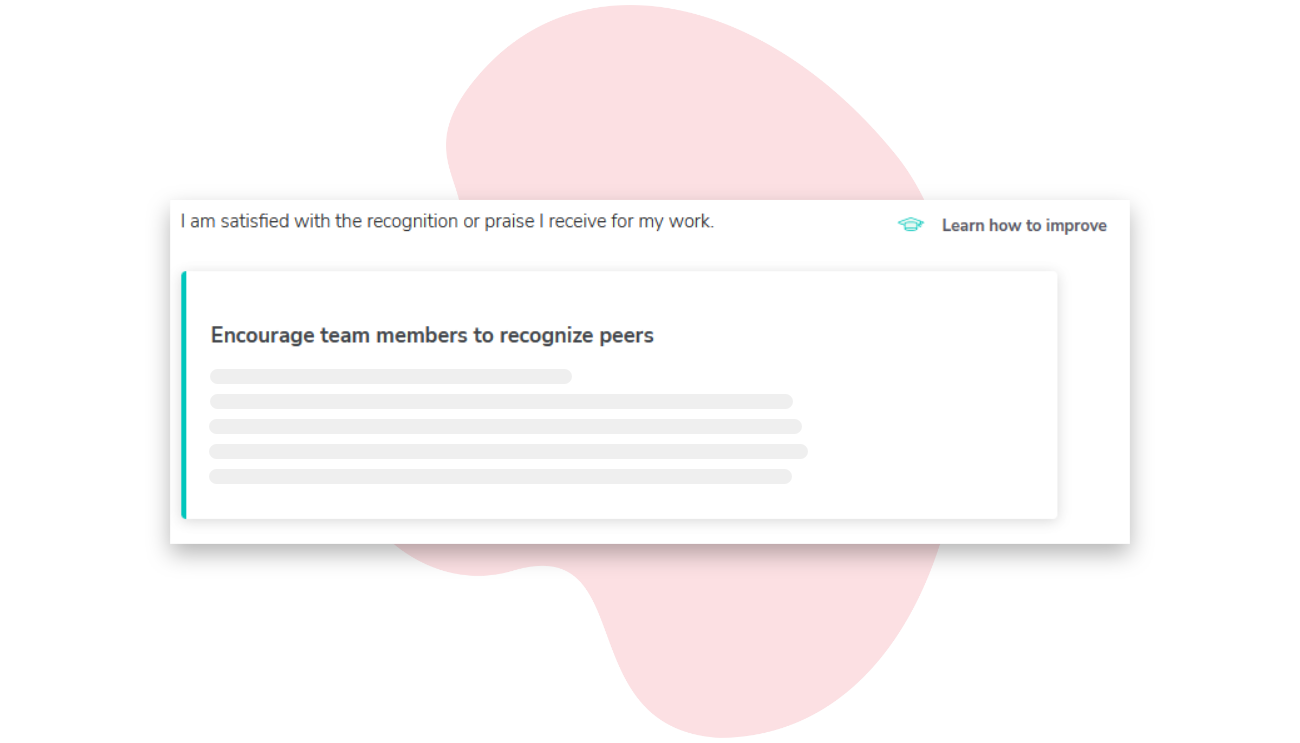
Empowers action
Surveying employees serves no purpose if leaders do not take advantage of the opportunities they discover. With Sparkbay's automated coaching, managers can act on easy-to-implement strategies. These tools drive action to ensure you meet your employee-centric objectives.
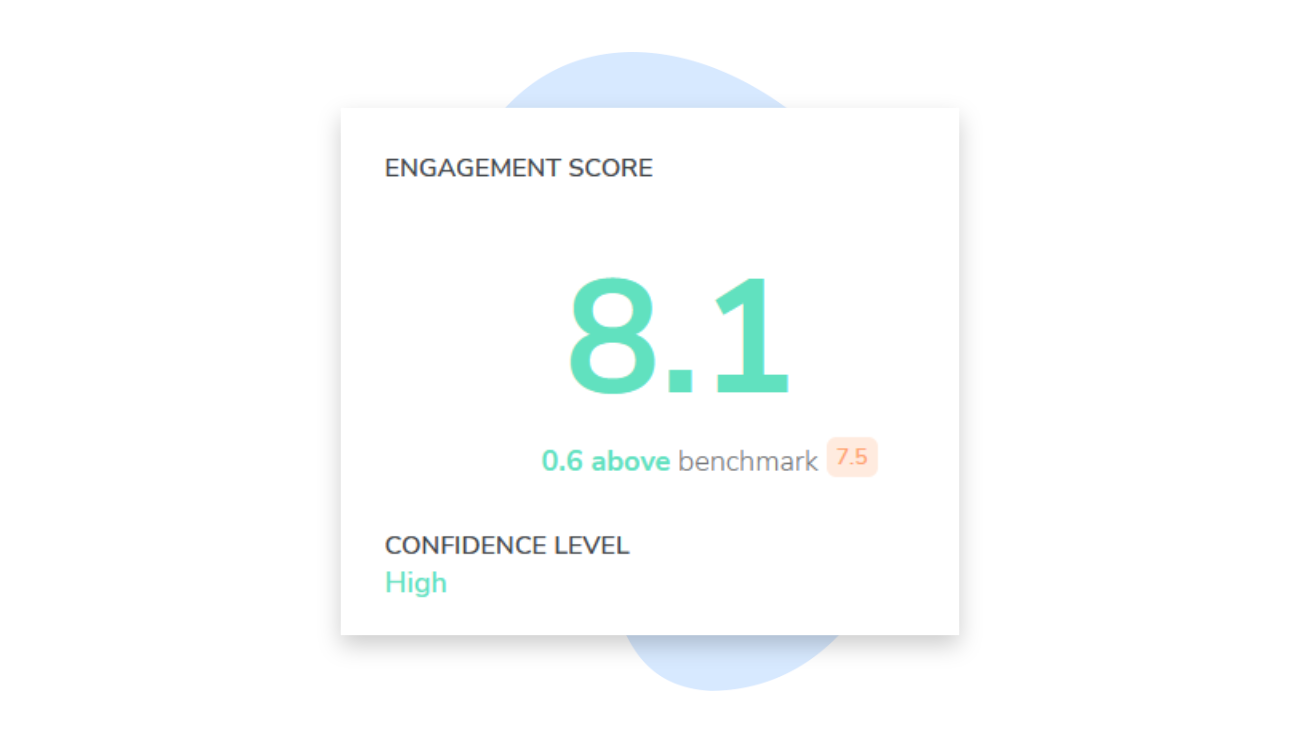
Provides robust benchmarks
Leaders need to compare their survey results with industry benchmarks to understand how they are doing. Using the right survey platform, you can compare your survey data with others in your industry, similar-sized companies, and top employers.
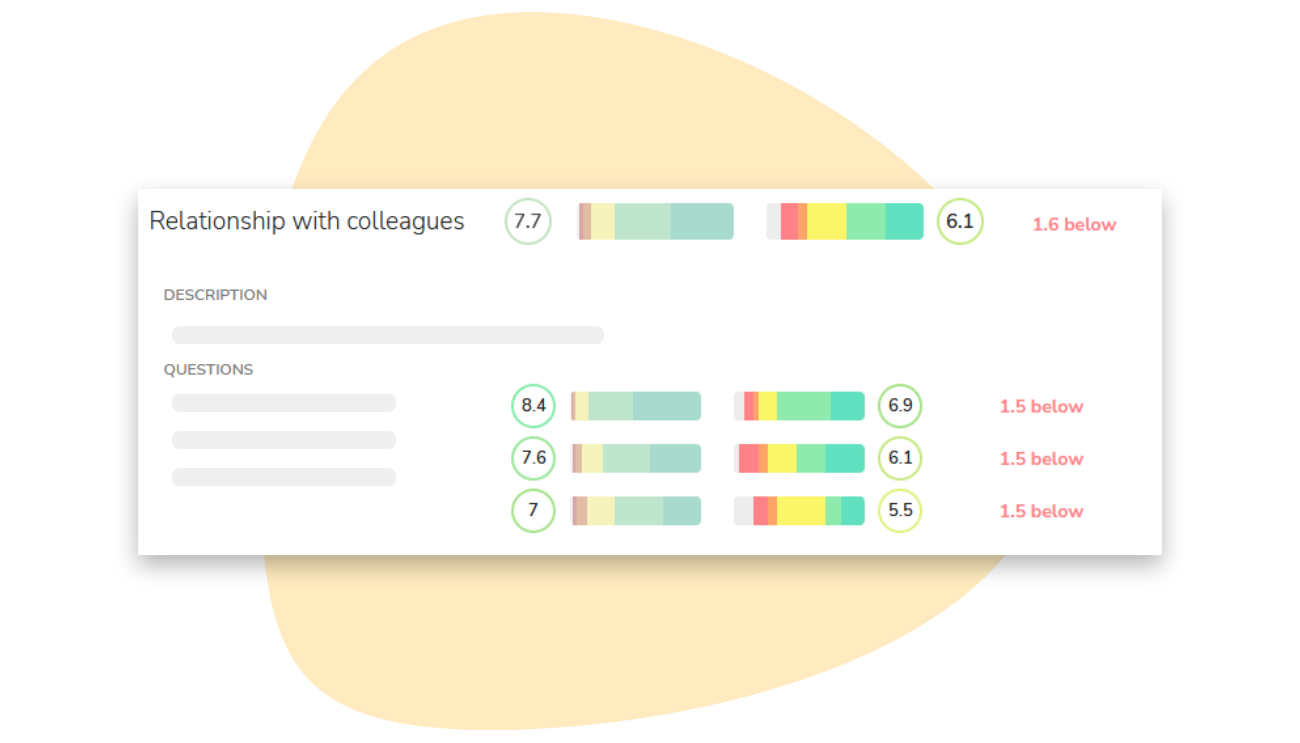
Equips managers with dashboards to visualize their results
Manager dashboards help managers visualize their survey results all in one place. With these dashboards, managers can easily track employee experience trends, and identify strengths and opportunities.
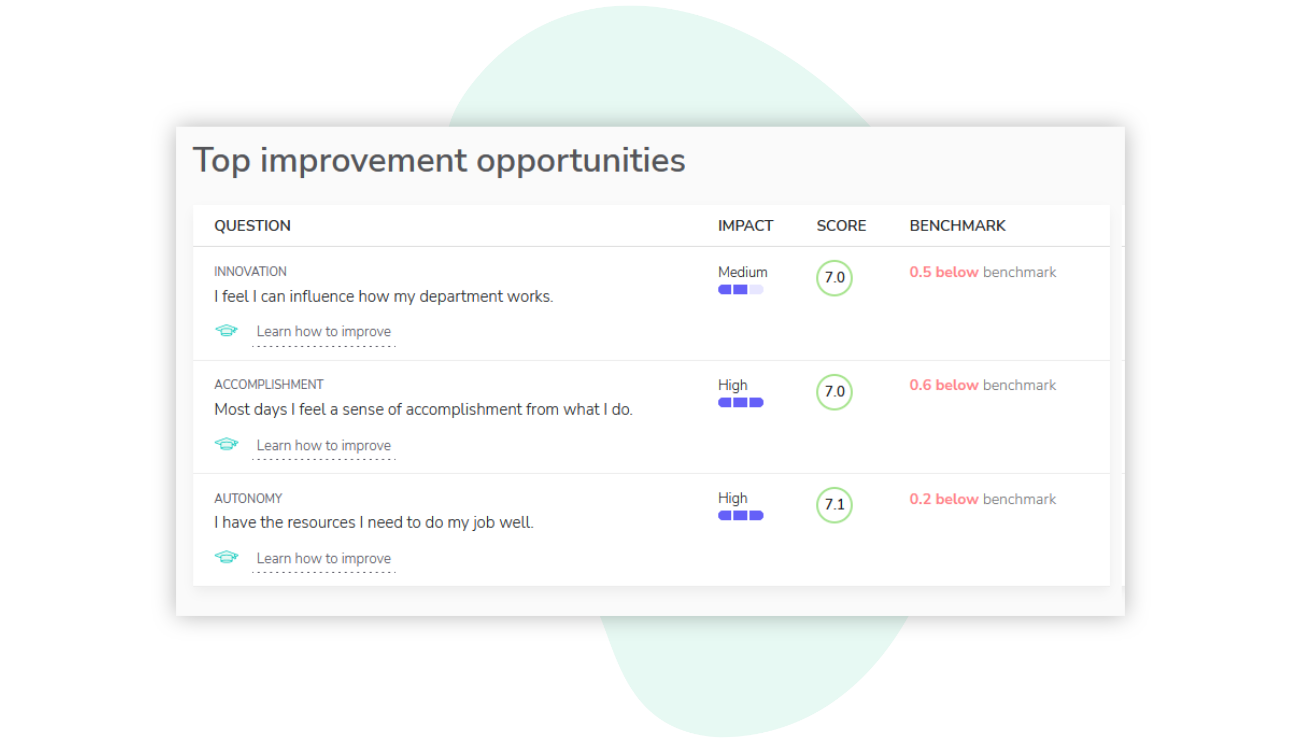
Provides a seamless user experience
You don't want your managers to waste valuable time on a clunky, hard-to-use platform. We designed Sparkbay with simplicity in mind. Your managers will master our intuitive dashboards in no time.
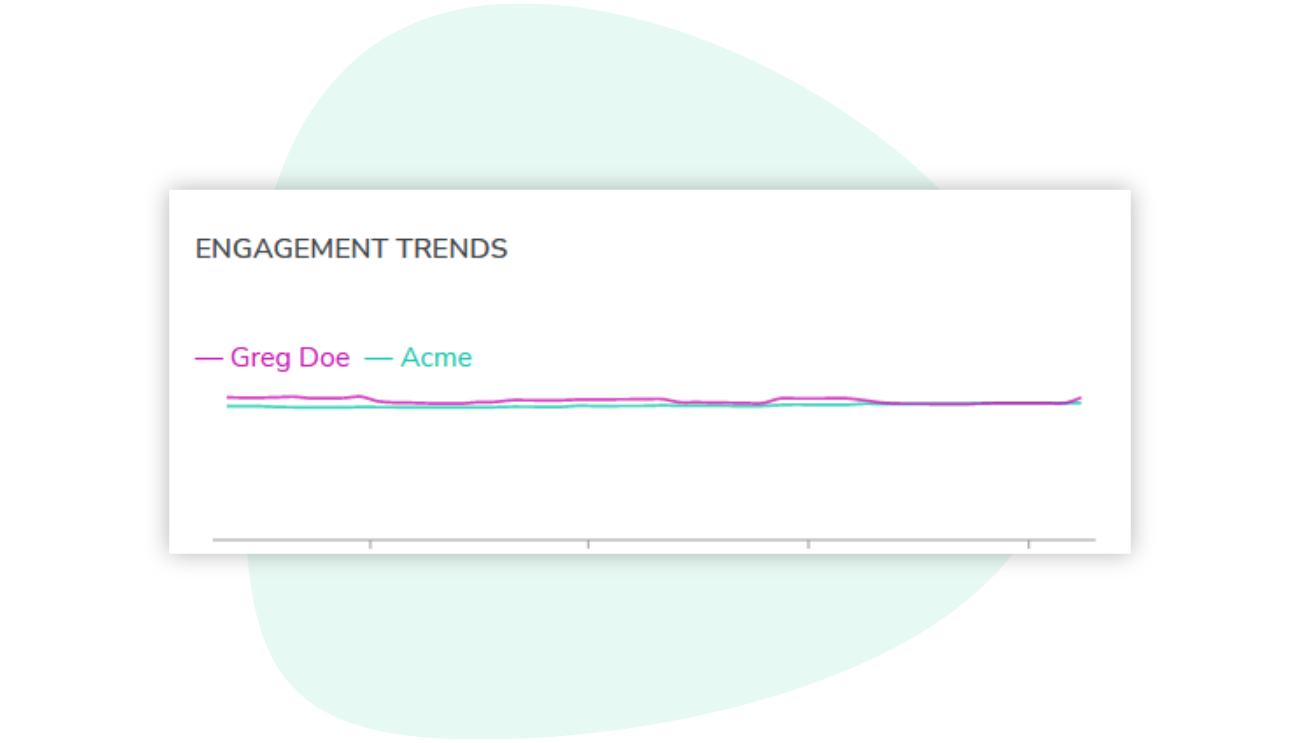
Gain access to real-time results
Taking action is the most significant part of your survey strategy. That’s why Sparkbay's real-time results let you expedite your process and propel insights into action.
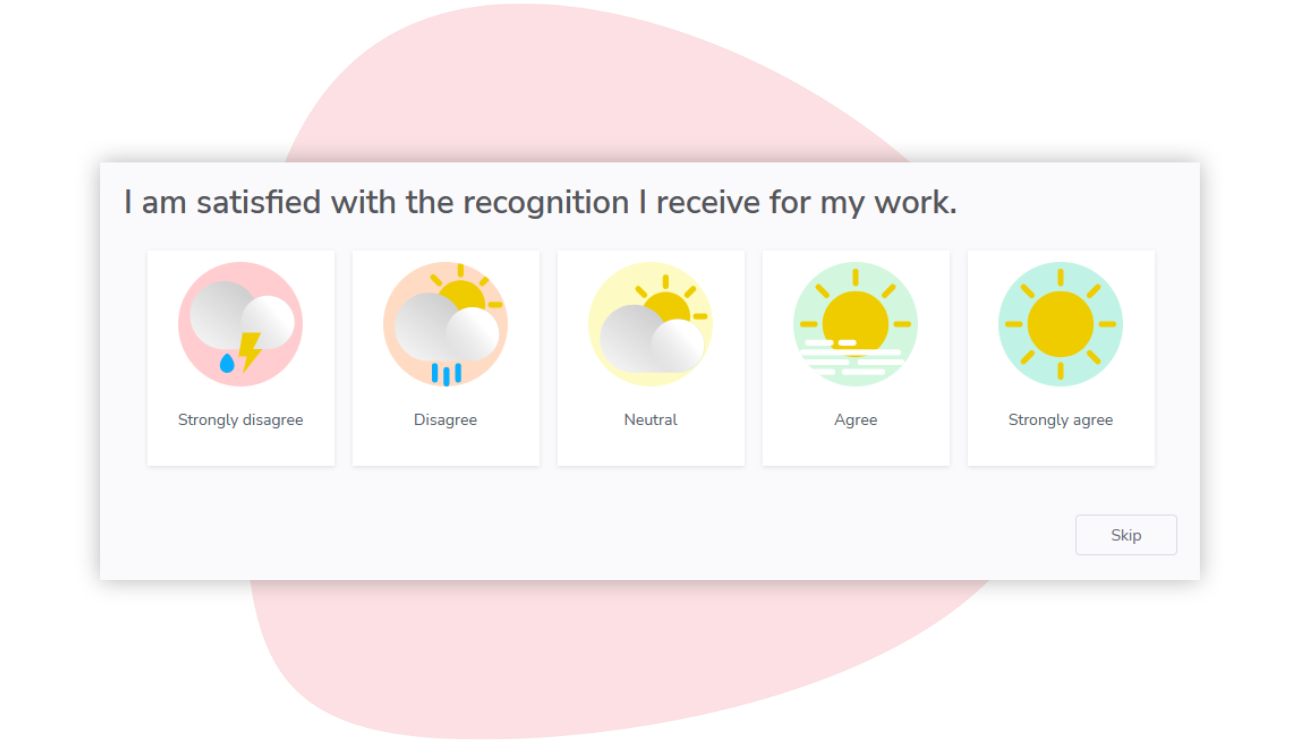
Offers science-backed questions on key workplace topics
To get the insights you need, you have to ask questions that resonate. Sparkbay offers science-backed questions on key workplace topics such as diversity and inclusion, change management, employee benefits, and more.
Measuring and improving employer branding through employee pulse surveys is straightforward and effective when you adopt an approach that works.
By using a robust employee survey platform to administer the right survey questions, you can easily collect employees’ feelings and sentiments to put these insights into context.
If you're interested in learning how Sparkbay can help you prevent new hire turnover, you can click here for a demo.

